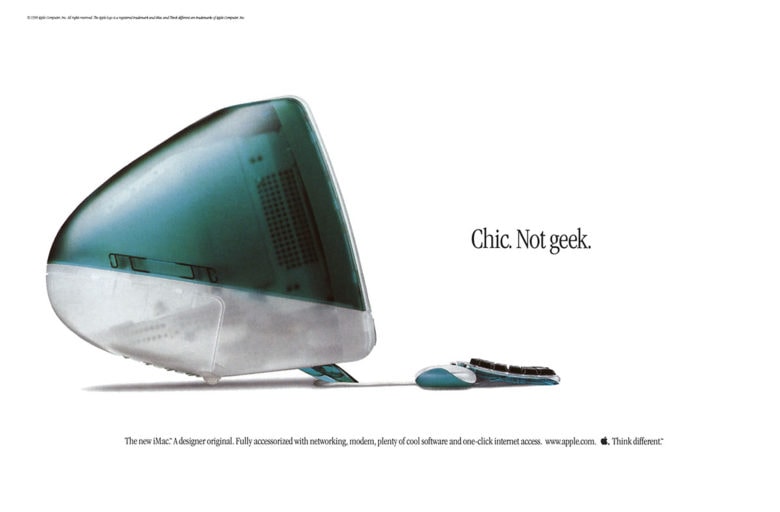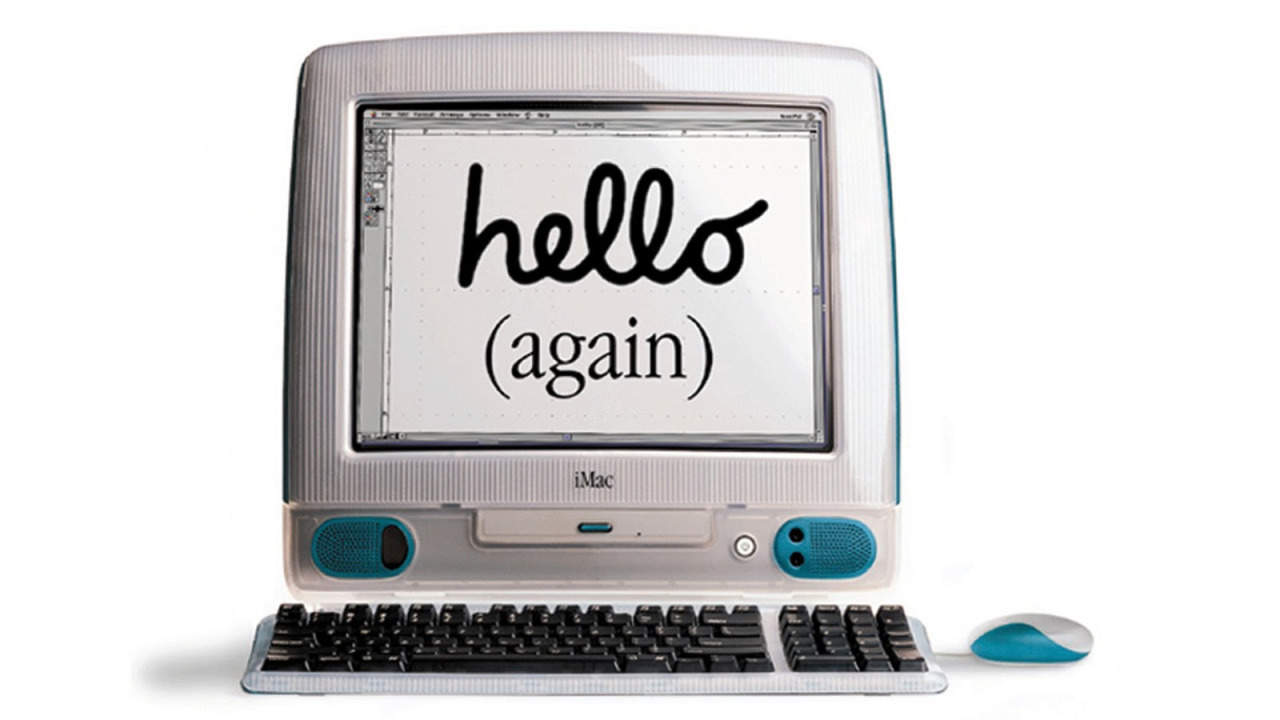 August 15, 1998: The iMac G3 — Apple’s brightly colored, translucent Macintosh relaunch — goes on sale to a rabid audience.
August 15, 1998: The iMac G3 — Apple’s brightly colored, translucent Macintosh relaunch — goes on sale to a rabid audience.
Steve Jobs’ first major new product since returning to Apple, the internet-ready iMac cements his legacy as a forward-thinking tech visionary. It also introduces the world to the design talents of Jony Ive — and pretty much saves Apple in the process.
Just another day at the office, eh?
iMac G3: Computer ‘from another planet’
In a sea of beige boxes, the colorful iMac cut a figure like no other computer. “It looks like it’s from another planet,” Jobs said at the time. “A good planet. A planet with better designers.”
That designer was, of course, Ive. He had worked at Apple for a few years by this point (one of his earliest projects was the Newton MessagePad product line). But the iMac G3 represented the purest expression of his creativity yet. The iMac also effectively formed a bond between Jobs and Ive that lasted until the Apple co-founder’s death in 2011.
The iMac G3 initially came in a kind of sea green that Apple dubbed “Bondi Blue” (named after the water at an Australian beach). The product line later expanded to include a broad range of colors and patterns.
Its translucent, plasticized design always struck me as both slightly retro and incredibly futuristic. The conflation made perfect sense in a decade like the ’90s, as people waxed nostalgic for the 1960s but looked forward to the new millennium.
The iMac: Tailor-made for the internet

Image: Apple
In terms of specs, the original iMac boasted a 233 MHz PowerPC 750 (G3) processor, 32MB of RAM, a 4GB EIDE hard drive, and a choice of either ATI Rage IIc graphics with 2MB of VRAM or ATI Rage Pro Turbo graphics with 6MB of VRAM.
Technologically, this wasn’t a massive upgrade from what Apple had done in the past, or what other companies were doing at the time. The big difference with the iMac — appearance aside — was that it was designed to be an internet computer.
The iMac came with a built-in telephone modem at a time when most computers included these only as optional extras. It also promised customers access to the World Wide Web within minutes of first switching on their new computer.
Apple received 150,000 orders for the iMac prior to its launch. The promise of the computer drove Apple’s stock price above $40 a share — its highest mark in three years. The iMac G3 also benefited from a healthy advertising budget of $100 million. The company’s PR department told people it would be the biggest computer launch in Apple’s history.
Early iMac G3 reviews missed the boat
Considering how fondly remembered the machine is today, and what an important turning point it represented for Apple, one of the most surprising things about the first iMac is that it received plenty of negative reviews when it first came out.
“The iMac will only sell to some of the true believers,” said a face-palming review in The Boston Globe. “The iMac doesn’t include a floppy disk for doing file backups or sharing of data. It’s an astonishing lapse from Jobs, who should have learned better…. The iMac is clean, elegant, floppy-free — and doomed.”
Other reviews complained about the lack of Windows compatibility (and therefore a possible lack of software). And many noted the iMac’s relatively high price point, even though the new machine cost considerably less than many previous Apple computers. (It retailed for $1,299, or more than $2,400 in today’s money.)
The most legitimate critique of the computer was its terrible “hockey puck” mouse, which illustrated perfectly what happened when form won over function in Apple’s design studio.
Still, the machine became an enormous success. Apple soon borrowed its winning design language and internet focus to create the new clamshell iBook laptop.
Did you own an iMac G3? More than two decades later, what are your thoughts and memories of one of Apple’s most iconic computers? Leave your comments below.


